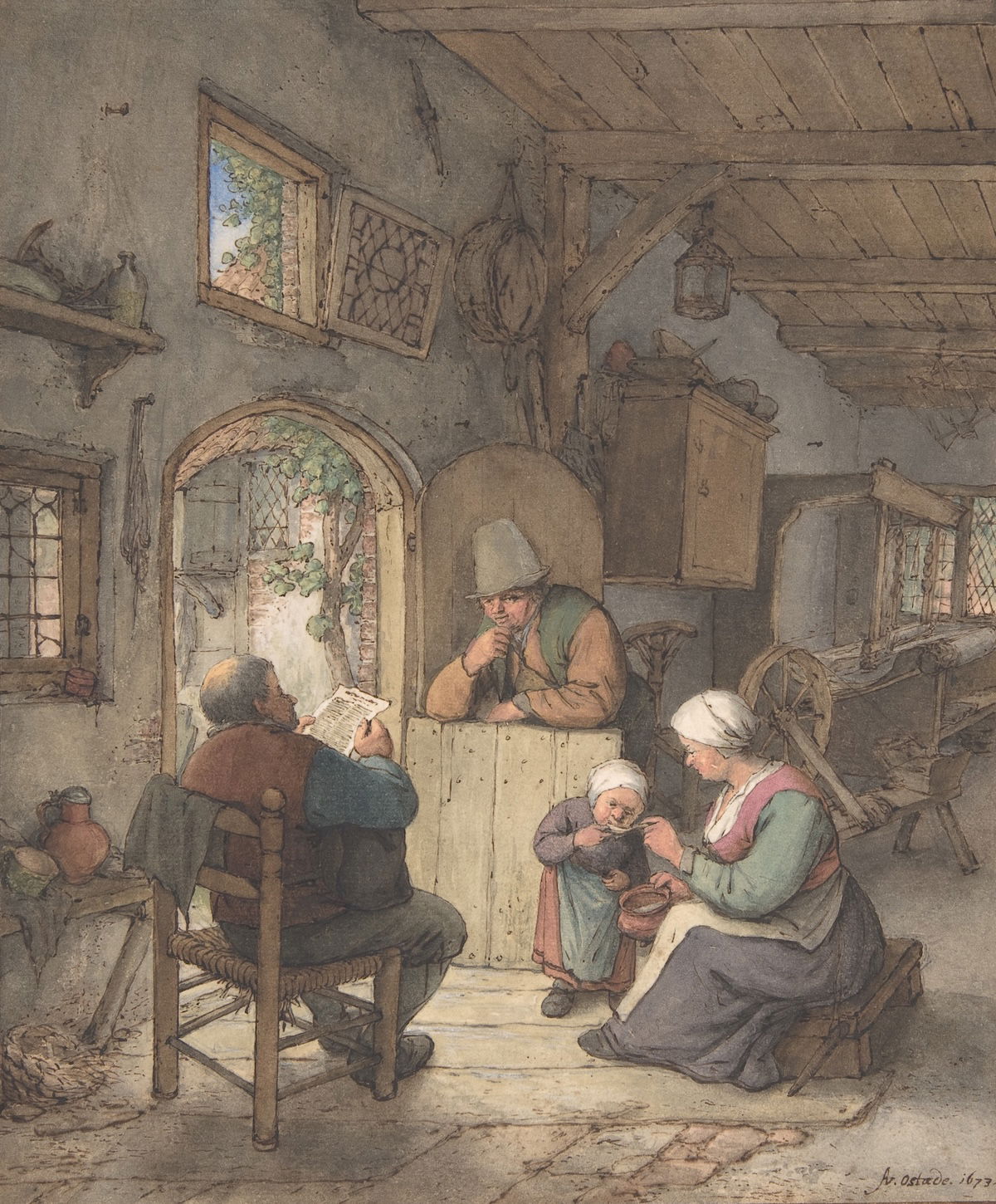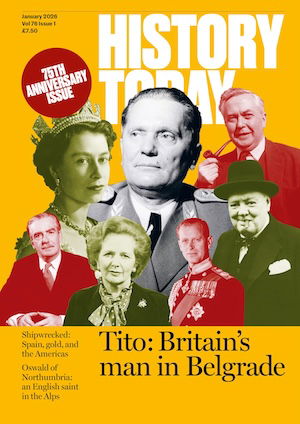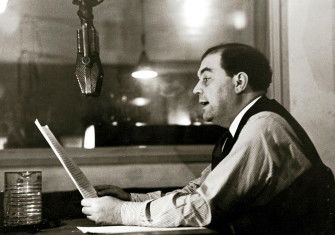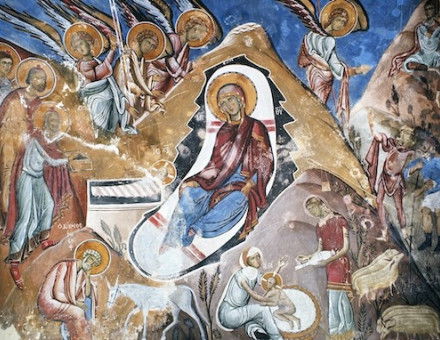‘The Great Exchange’ by Joad Raymond Wren review
The Great Exchange: Making the News in Early Modern Europe by Joad Raymond Wren looks to the 15th century for the birth of the press.

‘What news?’ In early modern Europe, upon meeting with acquaintances or strangers on the street, at the tavern, or in the piazza, this was the invariable form of greeting. Today, with information accessible in seconds, the enquiry is redundant. How we got from there to here, or the first part of that story, is the subject of Joad Raymond Wren’s monumental and mesmerising new study of the circulation of news in Europe from the early 15th century to the end of the 18th.
‘This is not’, we are told emphatically, ‘a book about newspapers’. Raymond Wren is eager to distance himself from triumphalist narratives that chronicle the slow rise of the fourth estate, and the development of supposedly sophisticated national news media. Rather, the book is a painstaking reconstruction of – and in many ways a lament for – an international network of news transmission; one that did much, so Raymond Wren argues, to create a shared sense of European identity.
The word network is used precisely rather than loosely. An early chapter provides a helpful primer in network theory, reminding us that networks are complex systems, by means of which the connections between a large assemblage of things are organised in non-random but not necessarily planned ways. A network involves ‘nodes’ connected to each other by ‘edges’, with the best-connected of the nodes operating as ‘hubs’. In early modern Europe, ‘news moves between nodes, along edges, via hubs’. Here, for practical purposes, nodes are the places where news reports originated and were received, and hubs are the points through which they disproportionately passed. Particularly in the earlier part of the period, Venice (the ‘newsiest’ place in Europe) was the hub par excellence, along with Paris and then Augsburg and Amsterdam. The Dutch city assumed the mantle from Antwerp after the latter’s entrapment in the Eighty Years War – evidence of networks’ capacity for self-repair. London, until late in the story, was a marginal player.
At the heart of the narrative is the manuscript newsletter known in Italian as an avviso, containing multiple (and potentially detachable) paragraphs, each constituting a basic unit, or ‘item’, of news, prefixed by a note of where the report had come from. The avviso was from the later 16th century complemented by the printed pamphlet, and in 1605 the newspaper was born when a news-writer in Strasbourg had the bright idea of printing an avviso and then printing another the following week. But Raymond Wren’s story is one of slow transformation, rather than revolution. He emphasises fitful professionalisation, the co-existence of manuscript and print, and gradual increases in the speed at which news travelled, along routes involving an amalgam of state and private initiative.
There are a few topics on which more might have been said. The book contains some discussion of chatty London coffee houses (and their Venetian equivalents, barbers’ shops) but otherwise relatively little about the oral transmission of news. Commentators sometimes place this in a distinct category, labelling it gossip or rumour. Yet rumours are only pieces of news that subsequently turn out to be inaccurate. They could be politically potent: several serious rebellions were sparked by reports of impending new taxes or religious reforms. Raymond Wren makes only passing mention of the regular reports sent back by members of the Society of Jesus. The hundreds of overseas Jesuits belonged, however, to what was in effect the first global news-gathering organisation, and greater attention to their activities might complicate the contention that Japan and China were ‘entirely disconnected’ from European news networks. More generally, the role of religion in the dissemination and reception of news deserves more scrutiny. The doors of parish churches (and not just in Luther’s Wittenberg) were noticeboards for announcements, and almost everywhere the pulpit was the medium by which the greatest number could most quickly be informed.
It feels churlish, though, to point to gaps in a work of such extraordinary depth. Early modern satirists, like modern ones, complained that there was too much news, and that it couldn’t be trusted. Raymond Wren is at pains to insist, however, that our current crisis of veracity and verification is not a return to conditions of prejudiced and unfounded opinion that prevailed before the dawn of fact-checked journalism. Despite attempts by governments to censor news reports, and by partisans to place a slant on them, Raymond Wren finds the tenor of early modern news communication to be typically inquisitive, moderate, and measured. People understood that news was not a ‘sealed unit’ – that no news was still news, and that reports should be considered provisional until confirmed by subsequent attestation. The system, in other words, had built in to it healthy instincts of scepticism.
The disappearance of the avviso, and its replacement at the end of the 18th century by an ever more industrialised press, is seen by Raymond Wren as in many ways retrograde, a narrowing of horizons. Before this, an avowed interest in foreign news was rarely regarded as suspicious or unpatriotic, but it became so with the rise of nationalist sentiments that the new daily papers reflected and reinforced. News increasingly resembled a consumer product, with a restricted geographical focus encouraged by the rise of advertising promoting local goods.
In The Great Exchange – its title borrowed from John Earle’s satirical sketch of news-mongering in the nave of St Paul’s Cathedral (1628) – Joad Raymond Wren has produced a transformative work of transnational history, one that is theoretically insightful without succumbing to jargon, deeply grounded in a rich seam of primary sources, and informed by contemporary resonance and serious moral purpose. What it lacks, for good or ill, are prescriptions from history for getting out of our present predicament: ‘Fake news is new, and something we do to ourselves.’
-
The Great Exchange: Making the News in Early Modern Europe
Joad Raymond Wren
Allen Lane, 624pp, £40
Buy from bookshop.org (affiliate link)
Peter Marshall is Professor of History at the University of Warwick.






